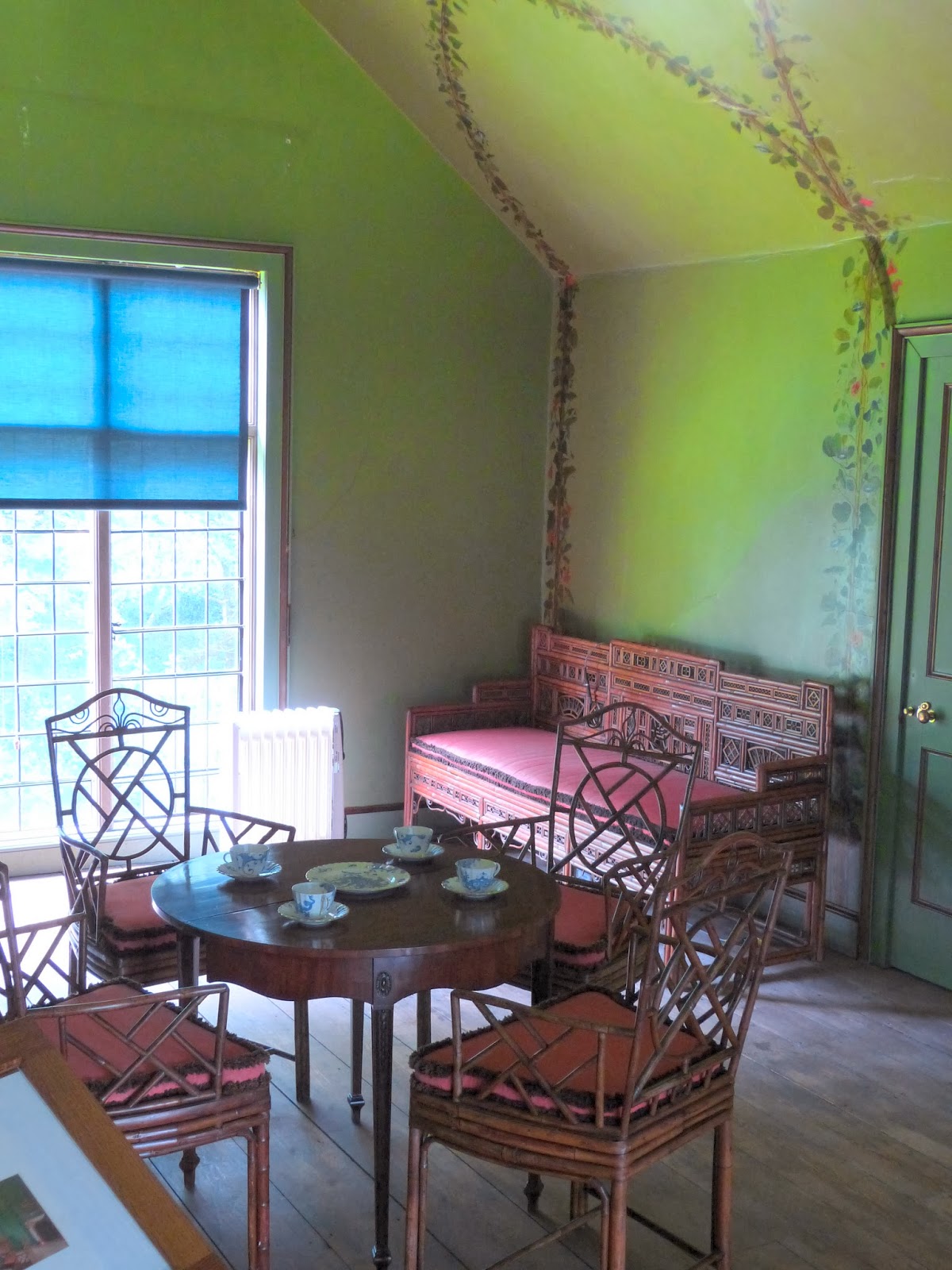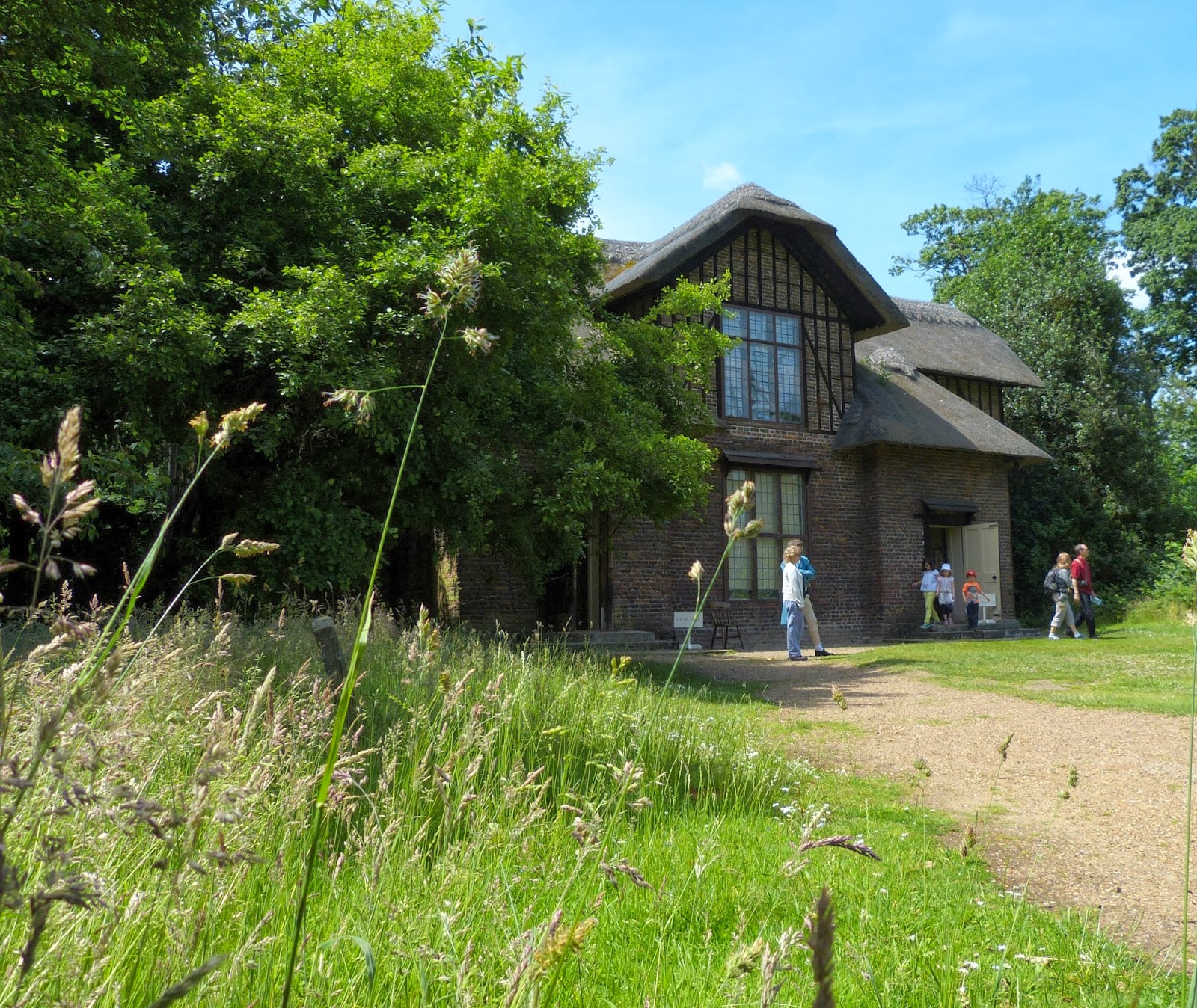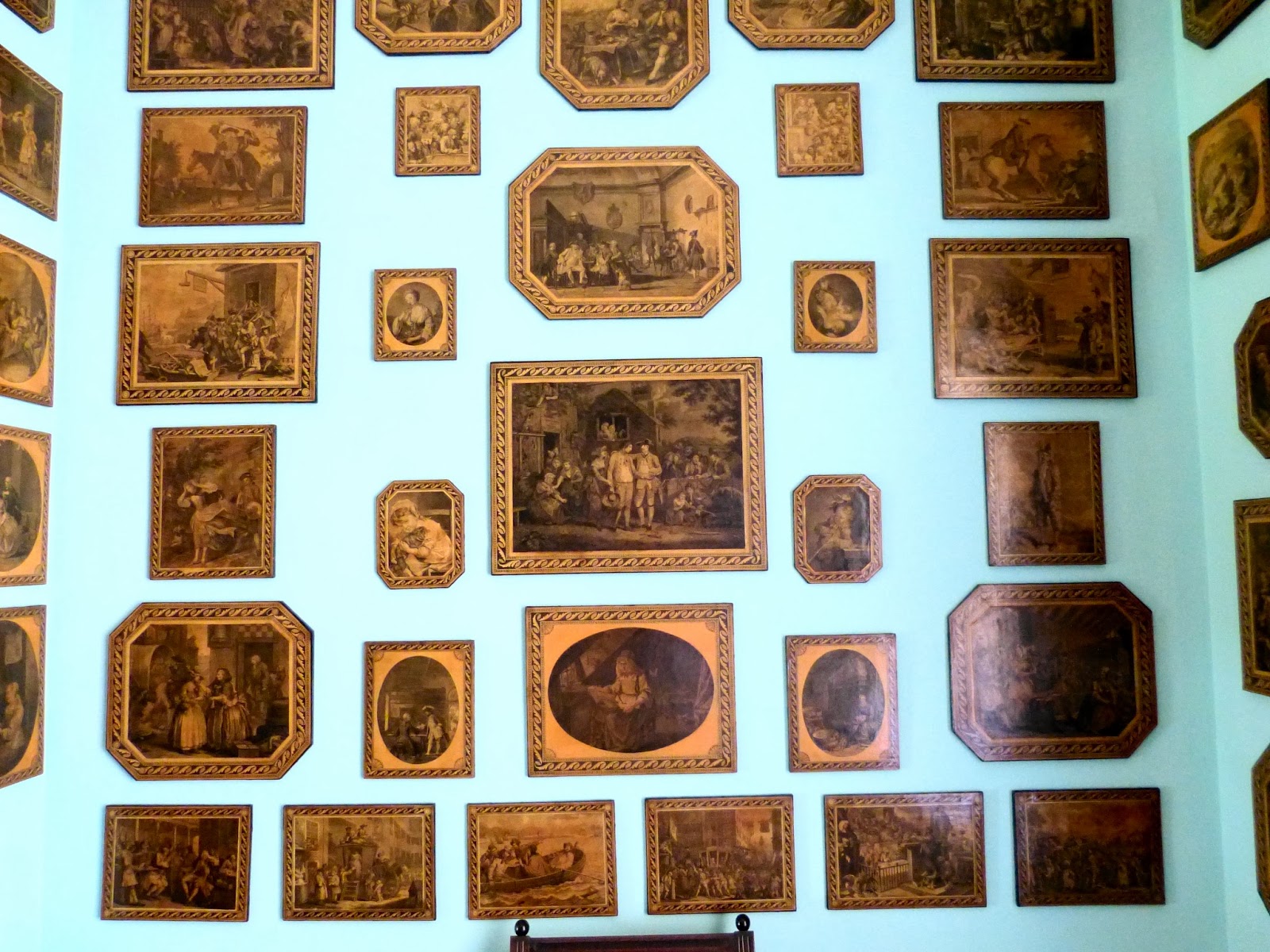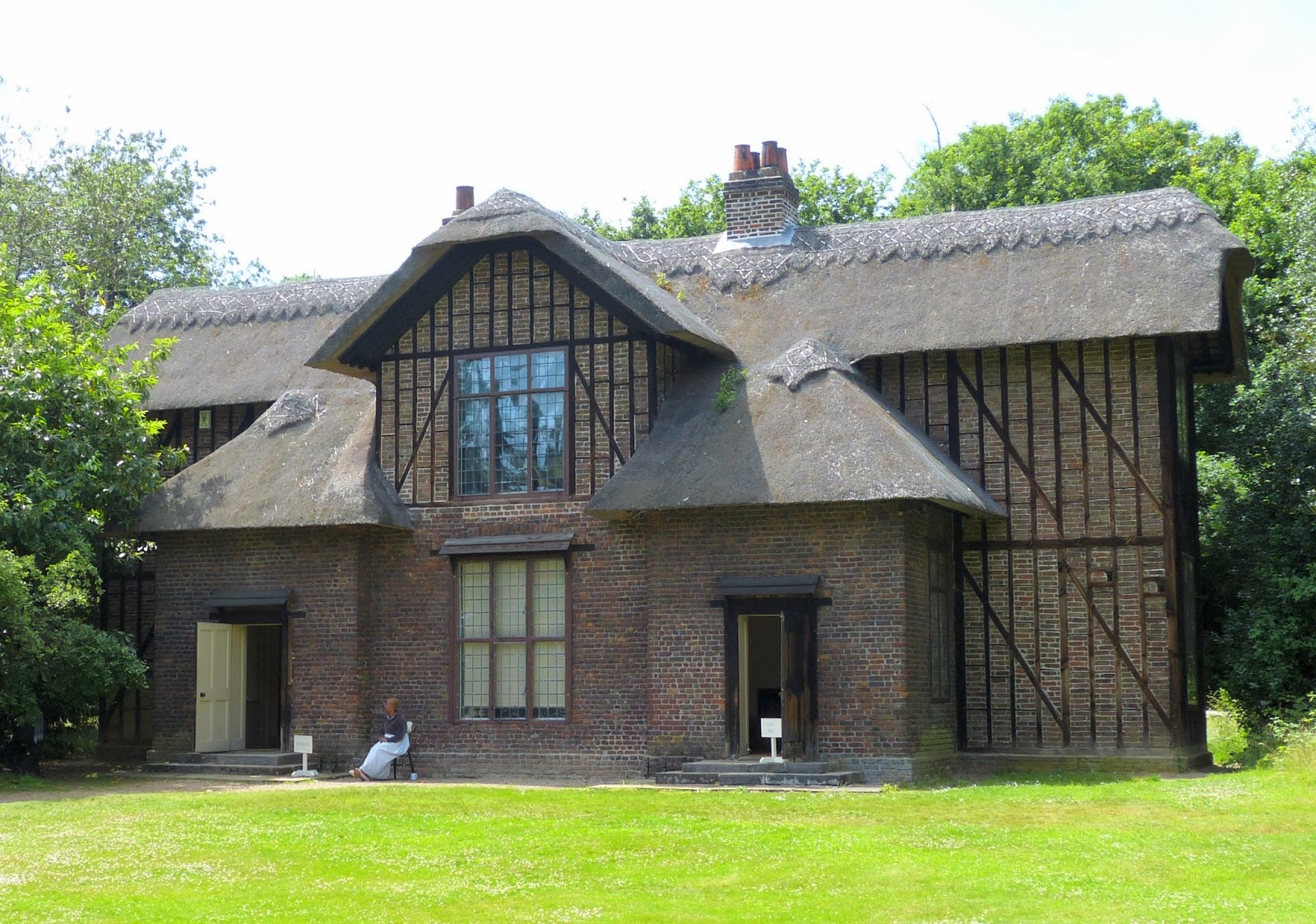History
 |
| Queen Charlotte's Cottage, Kew (2013) |
It is difficult to determine exactly when the building now known as Queen Charlotte’s Cottage was built.
One source records that a one-storey building was erected on the site between 1754 and 1771 in the grounds of Richmond Lodge during the development of the New Menagerie, possibly as a dwelling for the menagerie keeper. This area now forms the western part of Kew Gardens. The cottage was then given to Queen Charlotte on her marriage to George III in 1761, and she extended the building and added an extra floor to house the tea or picnic room. (1)
Another source states that the earliest mention of the cottage is not until 1771, and that it was built for Queen Charlotte as a cottage orné – a picturesque building made to look like a rustic cottage with aged window frames, poor quality bricks and a thatched roof. It may have been designed to remind Queen Charlotte of the farmhouses from her home in Mecklenburg. (2)
One source records that a one-storey building was erected on the site between 1754 and 1771 in the grounds of Richmond Lodge during the development of the New Menagerie, possibly as a dwelling for the menagerie keeper. This area now forms the western part of Kew Gardens. The cottage was then given to Queen Charlotte on her marriage to George III in 1761, and she extended the building and added an extra floor to house the tea or picnic room. (1)
Another source states that the earliest mention of the cottage is not until 1771, and that it was built for Queen Charlotte as a cottage orné – a picturesque building made to look like a rustic cottage with aged window frames, poor quality bricks and a thatched roof. It may have been designed to remind Queen Charlotte of the farmhouses from her home in Mecklenburg. (2)
 |
| Boot scraper outside Queen Charlotte's Cottage, Kew (2013) |
Queen Charlotte’s Cottage and grounds were given to the public by Queen Victoria in 1898. The cottage is now in the care of Historic Royal Palaces.
Georgian connection
After their marriage in 1761, George III and Queen Charlotte used first Richmond Lodge and then the White House on the Kew estate as their country retreat. The grounds of both properties are now part of Kew Gardens.
 |
| The print room, Queen Charlotte's Cottage, Kew (2013) |
Queen Charlotte’s Cottage was used as a summer house where the royal family could have informal meals and visit the Queen’s menagerie nearby. Although externally the cottage is simple, inside it boasts elegant staircases and a geometric stone floor. However, the rooms are small as the cottage was never intended for the royal family to live in.
 |
| The tea room, Queen Charlotte's Cottage, Kew (2013) |
Downstairs, the Queen displayed her collection of Hogarth prints on the walls of the print room, whilst upstairs was the tea or picnic room, with its beautifully floral and bamboo decorations which were painted by the Queen’s third daughter, Princess Elizabeth.
What can you see today?
• The picturesque exterior of Queen Charlotte’s Cottage
 |
| Queen Charlotte's Cottage, Kew (2013) |
 |
| The print room, Queen Charlotte's Cottage, Kew (2013) |
 |
| The tea room, Queen Charlotte's Cottage, Kew (2013) |
 |
| Detail from the artwork on the wall of the tea room in Queen Charlotte's Cottage, Kew (2013) |
Queen Charlotte's cottage is in the care of Historic Royal Palaces and has limited opening times. Find out more here.
If you enjoyed this article, you might like my guides to Kew Palace and the White House.
Rachel Knowles writes clean/Christian Regency era romance and historical non-fiction. She has been sharing her research on this blog since 2011. Rachel lives in the beautiful Georgian seaside town of Weymouth, Dorset, on the south coast of England, with her husband, Andrew.
Find out more about Rachel's books and sign up for her newsletter here.If you have enjoyed this blog and want to encourage me and help me to keep making my research freely available, please buy me a virtual cup of coffee by clicking the button below.
Notes
(1) From the Kew Gardens website (accessed 19/2/14). The dates for the building are very vague and if the building was erected after 1761, presumably it could not have been a wedding present. One possible explanation is that the original building was put up in 1754, but alterations were made to it in the period to 1771, after it was given to Queen Charlotte and transformed into her rustic summerhouse.
(2) From Kew Palace, the official illustrated history by Groom and Prosser (2006). They state that the cottage was on the site by 1771. However, if the cottage was altered rather than completely rebuilt, this would explain how the two different histories might fit together.
(2) From Kew Palace, the official illustrated history by Groom and Prosser (2006). They state that the cottage was on the site by 1771. However, if the cottage was altered rather than completely rebuilt, this would explain how the two different histories might fit together.
Sources used include:
Groom, Susanne and Prosser, Lee, Kew Palace, the official illustrated history (2006)
Kew Gardens website (accessed 19/2/14)
Kew Gardens website (accessed 19/2/14)
Kew Palace website (accessed 19/2/14)
The pages I used to write this article no longer exist, but there is a new page about Queen Charlotte's Cottage on the Historic Royal Palaces website here.
Photographs © RegencyHistory.net
Updated 28/1/22



I saw this when a tour I was on was allowed inside as the were the doing the renovation work. Very cool place!
ReplyDeleteIt is funny to think of the royal family in such small rooms, but I agree that it is quaint.
Delete